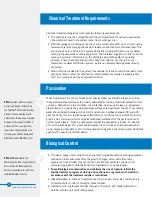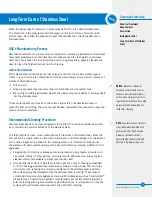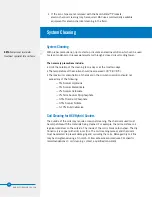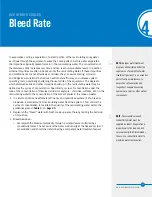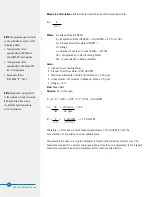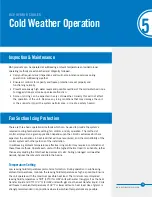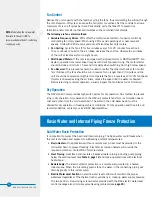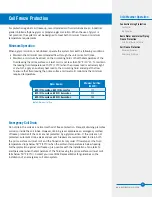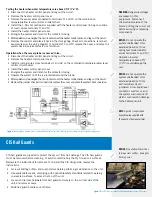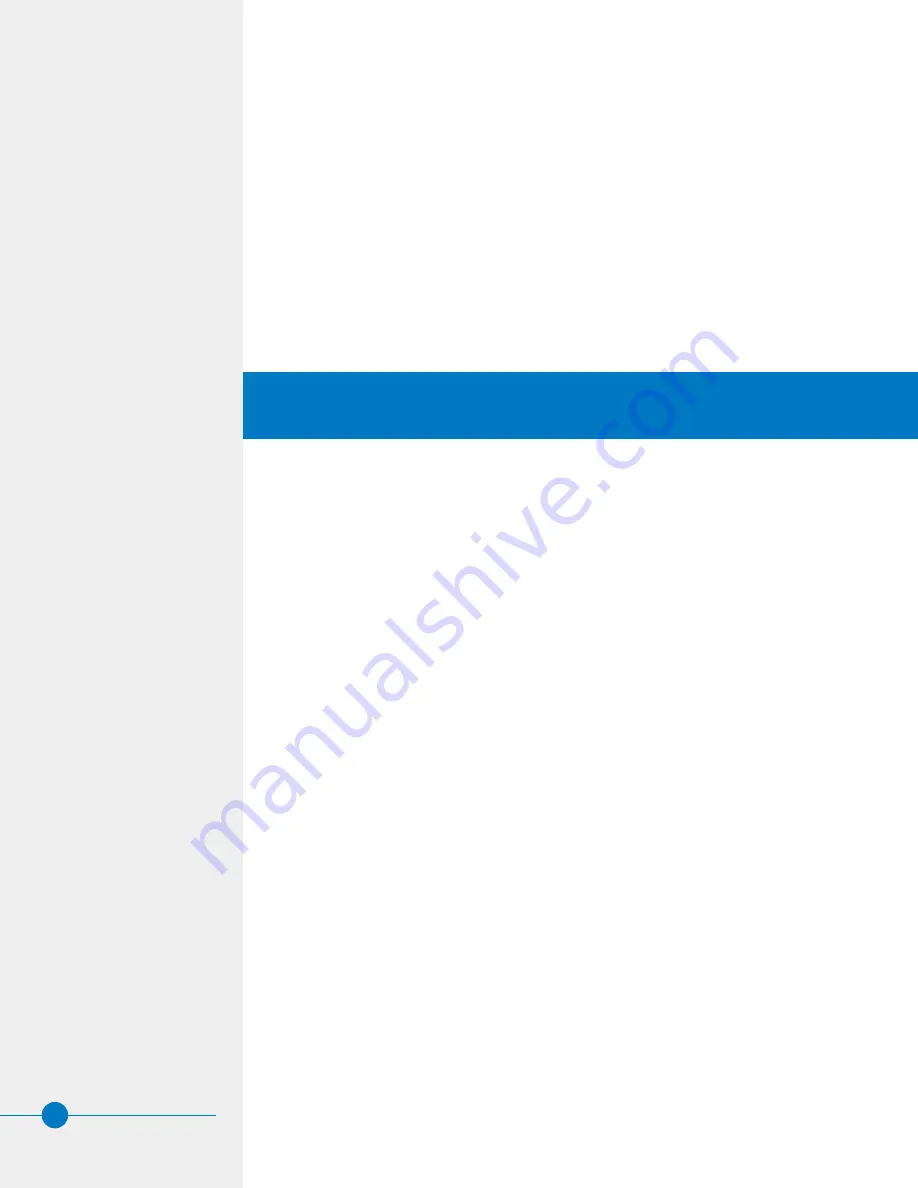
18
Heat Transfer Section
Inspect the coil surface. Any corrosion, damage, or obstructions must be corrected.
Fill & Drift Eliminators, Combined Inlet Shields, and CIS Hail Guards
HXV Hybrid Coolers contain polyvinyl chloride (PVC) fill with integral drift eliminators,
PVC combined inlet shields, and PVC drift eliminators located in the air path leaving the
prime surface coil. CIS hail guards are located on top of the unit, above the dry finned
coil, to protect the coil from hail damage. PVC material is impervious to rot, decay, rust,
and biological attack.
Inspection & Maintenance
Inspect the fill, eliminators, and combined inlet shields at least quarterly, and clean
them as described below. Inspect the CIS hail guards annually or after a hail event. The
inspection procedure is as follows:
• De-energize, lockout and tagout the fan motor(s) and the unit pump(s).
• Inspect the fill, eliminators, combined inlet shields and CIS hail guards for
obstructions, damage and fouling. Hail guard inspection requires safe access to the
top of the unit, which is provided by others.
• Remove any obstructions from the fill, eliminators, combined inlet shields, and
CIS hail guards.
• Remove any minor fouling chemically. Contact your local water treatment
consultant for advice. CIS Hail guards must be removed before cleaning, to avoid
contaminating the dry finned coil surfaces.
• Extensive fouling may require mechanical cleaning and flushing. Exercise care
when cleaning to avoid damage to the PVC components. Hail guards must be
removed before cleaning, to avoid contaminating the dry finned coil surfaces. See
page 30
for removal instructions.
• Lubricate the bearings as follows:
–
Initial Start-up:
Normally, no lubrication is required since the bearings have been
lubricated at the factory prior to shipment. However, if the unit has been stored at
the job site for more than three months, all fan bearings should be lubricated with
new grease before initial operation.
When lubricating, purge the old grease from the
bearing by gradually adding grease until a bead of new grease appears at the seal on
the underside of the bearing. It is necessary to visually observe the bearing as new
grease is pumped through the extended grease lines.
–
Seasonal Start-up:
Purge both bearings with new grease prior to start-up.
–
Operation
: Purge bearings with new grease every three months or 2,000 hours of
operation, whichever comes first.
–
Extended Shutdown:
Purge bearings with new grease prior to any prolonged storage
or downtime, then again just before startup.





















